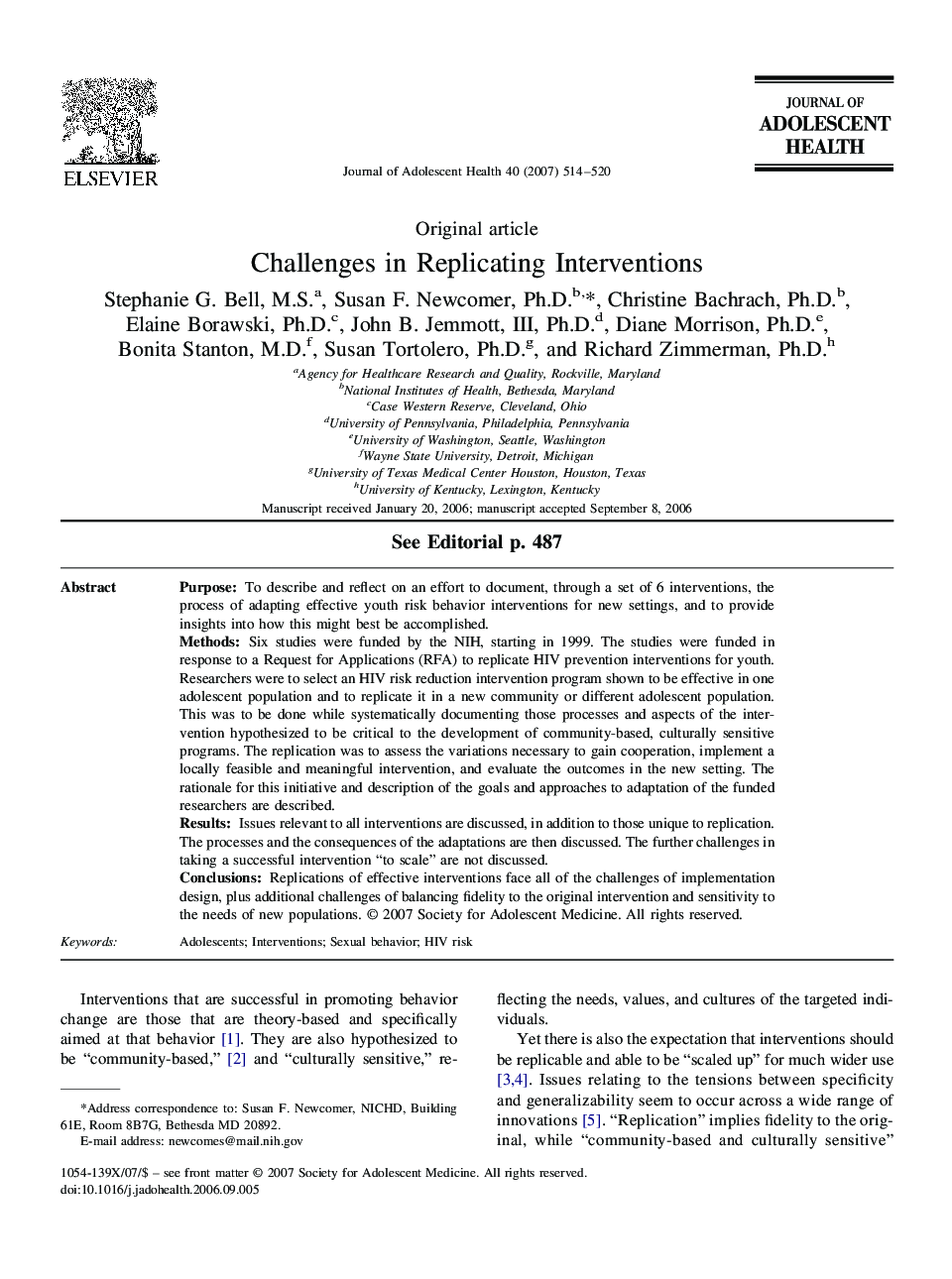| Article ID | Journal | Published Year | Pages | File Type |
|---|---|---|---|---|
| 1080824 | Journal of Adolescent Health | 2007 | 7 Pages |
PurposeTo describe and reflect on an effort to document, through a set of 6 interventions, the process of adapting effective youth risk behavior interventions for new settings, and to provide insights into how this might best be accomplished.MethodsSix studies were funded by the NIH, starting in 1999. The studies were funded in response to a Request for Applications (RFA) to replicate HIV prevention interventions for youth. Researchers were to select an HIV risk reduction intervention program shown to be effective in one adolescent population and to replicate it in a new community or different adolescent population. This was to be done while systematically documenting those processes and aspects of the intervention hypothesized to be critical to the development of community-based, culturally sensitive programs. The replication was to assess the variations necessary to gain cooperation, implement a locally feasible and meaningful intervention, and evaluate the outcomes in the new setting. The rationale for this initiative and description of the goals and approaches to adaptation of the funded researchers are described.ResultsIssues relevant to all interventions are discussed, in addition to those unique to replication. The processes and the consequences of the adaptations are then discussed. The further challenges in taking a successful intervention “to scale” are not discussed.ConclusionsReplications of effective interventions face all of the challenges of implementation design, plus additional challenges of balancing fidelity to the original intervention and sensitivity to the needs of new populations.
